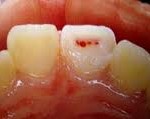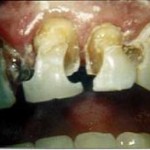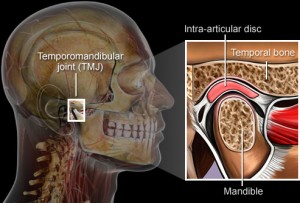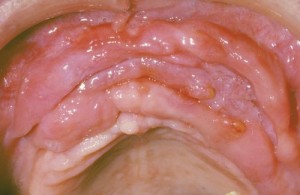Before any tooth extraction, anesthesia will be given to the patient by the dentist to numb the area. The anesthesia usually lasts for a few hours, depending on what type of anesthesia the patient is given. Because of this, it is important for the patient to avoid hot food because the patient will not feel the burn if the food is too hot. For the same reason, the patient is also not allowed to take hard, chewy food, because the patient will not realize it even when he/she accidentally bites on his/her own lips or other soft tissues. Continue reading
Tag Archives: pain
How to Temporarily Replace a Tooth Filling
You are starving. It’s that really annoying sensation down there that drives us all on an eating spree, devouring anything edible. However in your haste of consumption you fail to notice a small but hard piece of bone fragment in your freshly prepared chicken sandwich. You chomp into it. Very hard. There is a moment of silence as a sharp crack vibrates your skull. You spit out what remains of your meal and discover two hard objects; chicken bone and a piece of tooth filling. It’s a Sunday, your family dentist is closed for the weekend. What do you do?
The very first thing that you should do is evaluate the site of fracture. Take notice of any or a combination of:
1.      Pain
2.      Sensitivity ( to air, cold or hot fluids )
3.      Extent of the fracture
4.      Bleeding
Is it possible to reverse tooth decay?
Have a problem with tooth decay? Tooth decay or otherwise called caries has been a vast predicament that affects most dentate people. According to the United States Surgeon General’s report, caries is stated to be the most common chronic childhood disease of children aged 5 to 17 years and is five times more common than asthma and seven times more common than hay fever.
How does our tooth get caries?
Tooth decay is a demineralization process of hard tissues in our mouth that are contributed by four major factors namely bacterial microorganism, sugar (carbohydrates), tooth surface and time. Without this four factors decay would not occur. A community of haphazard collection of bacteria on your tooth is called plaque.
This bio film of plaque is capable of fermenting carbohydrate substrates (sugars like sucrose and glucose) and producing acid causing the plaque pH to fall below 5 within 1-3 minutes. Repeated falls in pH results in demineralisation of tooth surface and leads to carious lesion formed.
What causes sudden tooth sensitivity
Tooth sensitivity is defined as an experience of pain or discomfort that is sharp, sudden, piercing or excruciating in nature that is felt deep into the nerve endings. The pain may affect the tooth constantly or intermittently depending on its cause and nature.
Generally tooth sensitivity is caused by receding gums and enamel damage that leads to dentinal tubules in the dentine layer to be exposed and hence sensitized. Therefore, thermal sensitization like hot or cold drinks intake may make you cringe in agony. Occasionally, sweet and sour foods or even breezy cold air could also inflict sudden sensitiveness.
Factors that leads to dentine exposure: Continue reading
Management of pain and promotion of healing after a tooth extraction
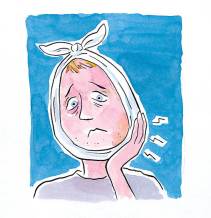 Management of post surgical tooth extraction pain
Management of post surgical tooth extraction pain
All patients should expect a certain amount of tooth extraction pain after a surgical dental extraction. Therefore, it is important for the dental surgeon to discuss this issue carefully with each patient before discharging them from the office. The surgeon will have to help the patient to have a realistic expectation of what type of pain that may occur and the intensity of the pain as well. Continue reading
How to deal with chronic myofascial pain
There are numbers of condition that can cause pain which seem to be associated with a tooth. These conditions are associated with muscle injury and are non tooth-origin, although the pain may seem to be coming from a tooth or gum. One of the most common conditions is chronic myofascial pain.
Temporomandibular Disorder
Temporomandibular Joint Disorder
Overview of the Temporomandibular Joint
The Temporomandibular Joint is a connecting hinge mechanism between the lower jaw and the base of the skull. This joint has two components which allows it to rotate and slide. Therefore allowing our jaw to open and close. You can usually locate the joint yourself by following the tip of your nose to the side of your face. Note the diagram on the left for better understanding. Continue reading
Denture-related problems affecting the mouth Part2
continuation of part 1
4)Â Â Â Â Â Epulis fissuratum (denture fibrous hyperplasia)
Commonly seen in those with poor fitting denture for a long period of time, the lesion may be due to the sharp denture margins or overextended flanges leading to chronic irritation of the soft tissues. It can appear as a single or multiple fold of tissue that grown in excess around the mucobuccal groove, which is the area where the gums meet the inner cheek. The tissue‘s mobility and continued growth can cause problems in maintaining denture retention. Painful ulceration is common in the base of the fold.
Treatment: Surgical excision of lesion and new denture construction. Continue reading
